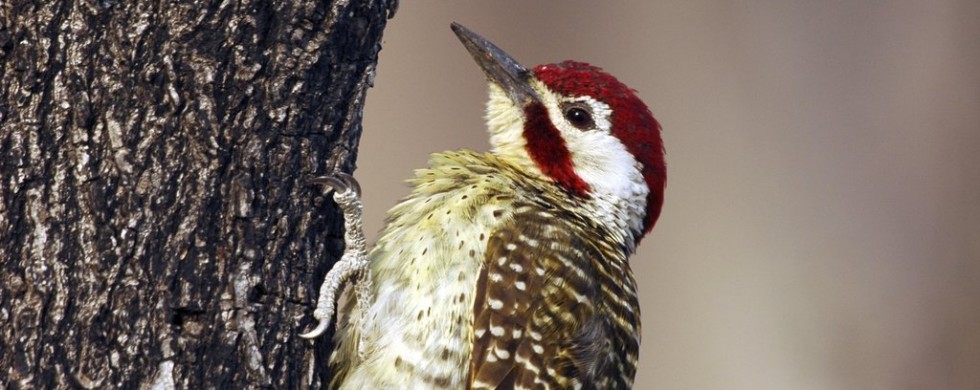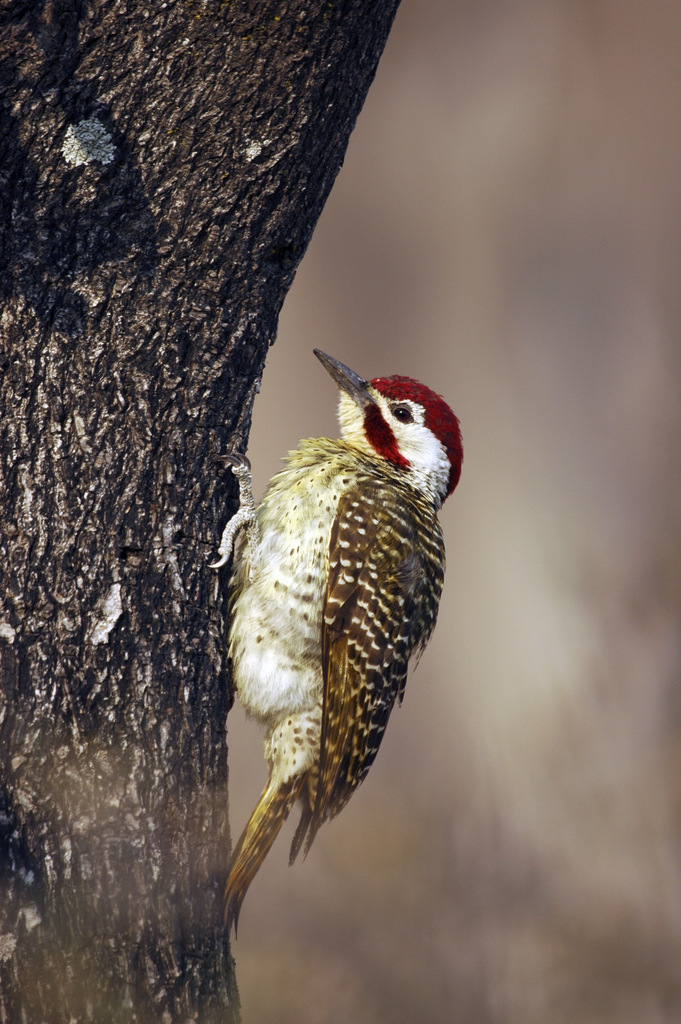
15
2011Knock Knock, Who’s There? – December 2011
Shot of the Month – December 2011
Woodpeckers are the avian jackhammers of the wild. When at work, looking for food, or building a new home, their telltale sound is unmistakable. Rat-a-tat-tat. Rat-a-tat-tat. Rat-a-tat-tat. Rat-a-tat-ouch–that-makes-my-head-hurt-just-thinking-about-it. Tat.
There are about 200 species of woodpeckers distributed around the world, though oddly, none are to be found in Australia. I photographed this Golden-tailed woodpecker in Botswana. This African species can be found across much of Southern Africa and in some isolated pockets of East Africa.
On a given day a woodpecker may strike a tree with his beak 8,000 to 12,000 times (up to 20 times/second). With each blow, the woodpecker experiences 1200 g of force. Is that a lot? For reference, humans pass out at 4 to 6 g’s of force. We get a concussion with a deceleration of about 100 g. (Geek Note: One g is the acceleration due to gravity at the Earth’s surface and is the standard gravity (symbol: gn), defined as 9.80665 meters per second squared, or equivalently 9.80665 newtons of force per kilogram of mass. Yawn)
How exactly do woodpeckers move around so easily in the trees and do what they do without knocking themselves out? Seems that woodpeckers have developed some nifty adaptations:
Avoiding Brain Damage (always a good idea)
- Thick Skull: Woodpeckers have a thick skull with spongy cartilage at the base of their beak. This spongy base absorbs much of the force.
- Strong Muscles: Woodpeckers have developed very strong muscles that attach the upper and lower jaws to the skull. By contracting these muscles a millisecond before contact the woodpecker diverts some of the impact to the base and rear of the skull.
- Accurate Strike: The woodpecker does a very good job of whacking (yes, that is the technical term for it) his target at a very precise ninety degrees. This perpendicular strike reduces torque which could cause a concussion.
- Small Brain: Woodpeckers have relatively small brains for birds of their size. The small ratio of brain weight to brain surface area allows for the impact to be spread over a large area, reducing the risk of damage.
Hmmn, thick-skulled and small-brained…make your own joke here ____________
Other nifty adaptations:
- Safety goggles: Just before contact a nictitating membrane (a transparent third eyelid) closes, protecting the eye of the woodpecker from flying wood chips. This membrane also acts like a seatbelt holding the eye in place – given the tremendous deceleration of the head the bird’s eye could literally pop out without this extra support.
- Kick Stand: Woodpeckers have a stiffened tail that is useful for climbing and foraging. They can use the tail as a prop.
- Knarly feet: Woodpeckers have zygodactyl feet, allowing them to walk up a tree easily. If you look closely at the image you can see these feet in action. Zygodactyl feet have 2 toes that point straight forward and 2 that point backward.
The wondrous woodpecker. Probably not the bird to call if you need help with your homework, but definitely look him up if you want help remodeling the kitchen.
Until next month… 🙂

